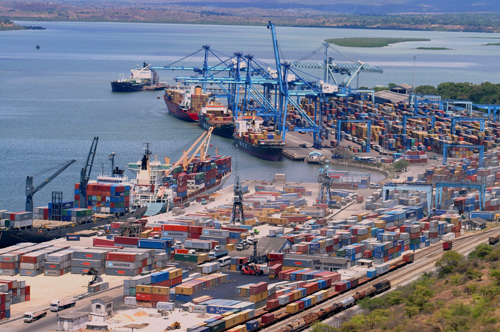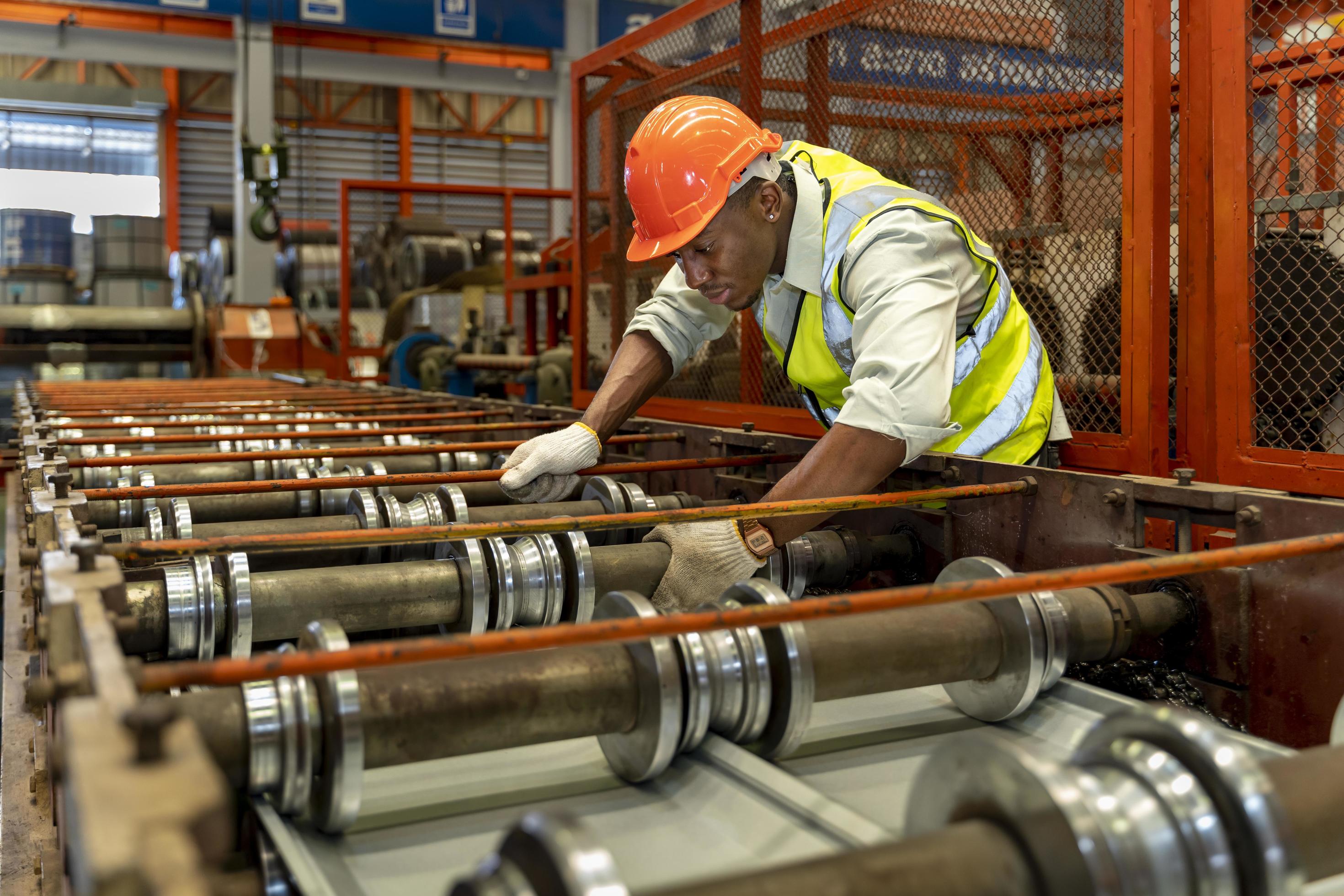
In the past the port has been controlled by the Portuguese, the sultan of Zanzibar, and the British. Today, Kenya Ports Authority (KPA), a state-run enterprise, is responsible for the port. The city of Mombasa, its port and the facilities around it, as well as the railway that runs from the coast to Rwanda Uganda and Burundi are important to the economy of the whole of East Africa. Transit trade to these countries, the DRC, Tanzania and South Sudan accounts for 30 percent of the port's throughput and this proportion is growing by up to ten percent a year. Mombasa is Kenya's only international sea port.
The port has grown rapidly in recent years as a transshipment node for fuel and containers. KPA aims to increase its container capacity to 1 million twenty foot equivalent units (teu). This means that ships with a deeper draught will be entering the port. To accommodate them, it was necessary to widen the access channel and the turning basin, deepen some landing stages along the quays, and build a new container terminal. The work started in June 2011. The existing channel was deepened at nine different points and around 6.5 million cubic metres of material dredged up by the contractor Van Oord used to construct the container terminal, thought to be the only berth on the east coast of Africa to be built on reclaimed land.
The project was successfully completed in April 2012, and container capacity increased by 250,000 teu to a nominal 800,000, though in fact the total amount handled is already more like 900,000 a year thanks to careful planning and the use of off-port container freight stations. With the completion of Berth 19 last year the expanded container terminal can now handle three 250 metre-long panamax vessels at the same time. To cope with these, the new terminal has been equipped with three ship to shore gantry cranes, eight new reach stackers and 27 terminal tractors. It has 120 reefer hookups.
Now a second container terminal is being planned for the port as a further extension of Mombasa's capacity. “The new project will complement the recently launched berth number 19 and the general growth in volumes of cargo arriving at the port,” said KPA managing director Gichiri Ndua. This is a major capital project, with funding provided through Japan International Cooperation Agency (JICA), and the work is being carried out by Toyo Construction Ltd, also of Japan. It will be completed in stages, with three new berths providing a total 900 metres of space, at an alongside depth of 15 metres. The first phase is scheduled for completion by 2016 comprising Berth 21, 320 metres in length, a side berth 20 with 11 metres draught. Berth 21 will have the capacity to handle 450,000 teu, with two ship to shore cranes and four rubber-tyred gantry (RTG) cranes supported by a 50 hectare stacking yard.
The second and third phases are due to be built concurrently and delivered by 2019, adding two further berths (21 and 22, with lengths of 320 and 350 metres respectively). These will be equipped with some eight ship to shore cranes and 20 RTGs and with a further 50 hectare stacking area. Once these facilities are in place the Port of Mombasa will be able to handle a throughput of 2.5 million teu per annum.
The emphasis on container development reflects the growing global shift from bulk cargo and breakdown goods to container traffic, and the huge investments being made around the world to keep up with it. Container throughput already accounts for more than 40 percent of the tonnage that passes though Mombasa, and the local infrastructure has struggled to cope. However that will all change following the completion of these projects, at least as far as the port itself is concerned. Meanwhile the port authorities have shown they can play a good game with a poor hand. Despite constraints the port has improved its productivity significantly over recent years, recording 22 crane moves per hour and removing many bottlenecks. Waiting time for vessels is now down to internationally acceptable standards, generally less than two days. Though transshipment still only accounts for about one percent of total traffic delaying the establishment of Mombasa as a transport hub for the Indian Ocean, the aim following commissioning of the new container terminal in 2016 is precisely that. Mombasa is ideally positioned to service the many smaller ports of the Seychelles, Mauritius, Madagascar or Zanzibar, which can no longer berth the large container ships now coming into service.
But for mainland Africa it's no good having an international standard port facility if the hinterland infrastructure that supports it is lacking. In November 2013, Kenya's president Uhuru Kenyatta laid the foundation stone for the construction of a new standard gauge railway line that will connect Mombasa with the capital Nairobi. "The project will define my legacy as president of Kenya," Kenyatta said. "What we are doing here today will most definitely transform ... the whole eastern African region," The standard gauge railway is planned to run between Mombasa and Malaba near the Uganda border and thence to other major east African cities such as Kampala in Uganda, Kigali in Rwanda and Juba in South Sudan. With this, the Kenyan government is hoping to strengthen ties between those countries through the growth of trade.
Mombasa is in rivalry with the smaller but also rapidly expanding port of Dar es Salaam in Tanzania, though the latter tends to be looked to by the landlocked countries of Malawi, Zimbabwe and Zambia. KPA however has the great advantage of having been established over many decades and enjoying rapid growth in Kenya itself and benefiting fom international investment in its neighbours, notably Uganda and South Sudan. Kenya's $25.5 billion Lamu Port and New Transport Corridor Development to Southern Sudan and Ethiopia (LAPSSET) could become the country's biggest ever civil engineering project. It includes the construction of a 32-berth port, three international airports, and a 1,500 kilometre railway line. A new oil refinery, in nearby Bargoni, and an oil pipeline are also planned. The pipeline would run to Kenya's Eastern Province before splitting, with one branch running to South Sudan's capital, Juba, and another through Moyale in the north to Addis Ababa. A 1,730km road network is also being planned.
To give an idea of the scale of this project for KPA, the Lamu megaport will be Africa's largest port, three times the size of Mombasa. Its 32 berths will give a total quay length of ten kilometres, with alongside depths of up to 18 metres – enough to handle the largest post-panamax vessels. Construction of the first three berths will start in June under a $488 million contract awarded to China Communications Construction Company (CCCC). “The Lamu megaport is one of our major projects this year,” said Ndua.
Written by John O’Hanlon, research by Stuart Platt
DOWNLOAD
 KPA-Africa-TLMS-Jun14-Bro-s.pdf
KPA-Africa-TLMS-Jun14-Bro-s.pdf












